Experience Cluj-Napoca
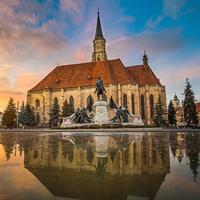
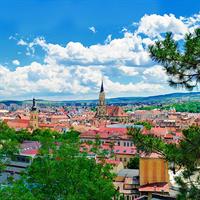
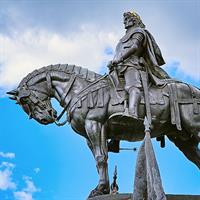
Overview
The spectacular, historical city of Cluj-Napoca is the former capital of Transylvania and one of the biggest cities in the region decorated with medieval, Baroque architecture. Dating back centuries decorated with historic churches, fascinating museums, and awe-inspiring ruins to visit. Now the city has a large student population with plenty of restaurants, an artsy youngster vibe, excellent clubs, and some of Europe’s best-loved electronic music festivals.
Cluj is one of the most visited cities in Romania, offering visitors a pleasant experience and a gateway to the Transylvania region. Surrounded by verdant forests and grasslands there are endless possibilities for exploring the great outdoors with hiking, mountain biking, and plenty of opportunities for nature watching with animals such as badgers, boars, foxes, rabbits, and squirrels that call the nearby forests home.
The city of Cluj is a box of treasures, one of the most effervescent cities in all of Europe. The “Napoca” from the city’s name comes from the name of the Roman citadel which was founded over 2,000 years ago on the city’s territory. The Romans settled and built a citadel in the city’s historic town center that remains today after conquering the Dacians.
When entering the city visitors will notice three names on the sign; Cluj, the Hungarian version, Kolozsvar, the German variant, and Klausenburg the German variant of Cluj,which before 1918 was part of the Hungarian Kingdom and later, the Austro-Hungarian empire.
In 2015 Cluj was titled the “European Youth Capital”. The city was the host of many festivals, and events organized throughout the year hosting the first edition of the ‘European Festivals Awards 2015’ winner UNTOLD Festival and 1,500 other activities which put Cluj on the map for the young as an exhilarating city of Europe.
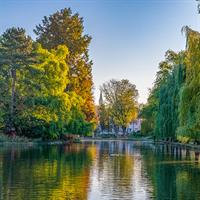

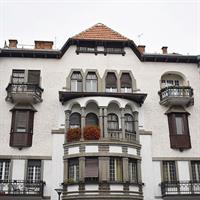
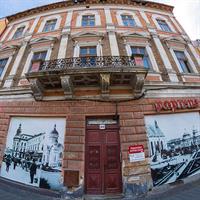
Things to see and do
Exploring the historic town center of Cluj-Napoca around the Unirii Square also known as Union Square is a great place to get a feel for the city. Stroll past some of the city’s most iconic buildings and attractions. Highlights in and around the popular square include the open-air Ethnographic Museum, the Gothic St. Michael’s Church which is the sparkling centerpiece of the square, Banffy and Teleki Palaces that now house the National Art Museum, the Mirror Street, the Franciscan Monastery, the Piarist Churches, the First Unitarian Church in the world and dozens of bohemian cafes, cozy bars, and restaurants with terraces spilling out onto the square.
The city is home to many important and interesting museums including the National Museum of Transylvanian History, the Ethnographic Museum, the Cluj-Napoca Art Museum, the Pharmacy Museum, the Water Museum, the National Art Museum, the Water Museum, and the museums of Babes-Bolyai University - the University Museum, the Museum of Mineralogy, the Museum of Paleontology and Stratigraphy, the Museum of Speleology, the Botanical Museum, and the Zoological Museum.
There are many art galleries found in the city offering a mixture of established institutions such as the National Art Museum along with underground galleries like Fabrica de Pensule. Galleria Quadro is considered to be one of the best modern galleries in the city, Creic Center is one of the new creative hubs for local artists.
The Palace of Justice is another great landmark in the city built between 1898 and 1902 designed by Gyula Wagner with an eclectic style. The building stands in Avram Iancu Square where the National Theatre, the Palace of the Prefecture, the Palace of Finance, and the Palace of the Orthodox Metropolis all stand.
Central Park is one of the beautiful relaxing verdant areas in the city, there is a lake in the middle where the Chios Casino is located, and from the terrace, visitors can rent rowboats, and hydro bicycles and circle the small island. The botanical gardens cover several acres of land in the city and contain a small Japanese-style garden, greenhouses, a small watercourse through the middle, and a tower to climb for great views over the gardens.
Take a hike up Cluj-Napoca’s most scenic observation point, Cetatuia Hill (Fortress Hill) located just across the river from Old Town. It was once where an old fortress stood and people were jailed there, and the Transylvania Hotel (also known as the Belvedere) once stood on top of the hill. Climb the stair from the center of the city and enjoy a meal at one of the many restaurants and cafes perched on the hill. The park on the hill is a great place to hang out and the perfect location to capture an incredible sunset and birds-eye views.

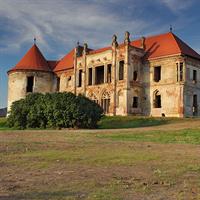
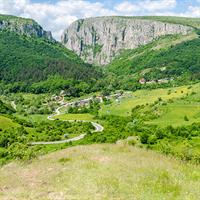
Castles
The Transylvania region is renowned for its charming, mysterious castles, a mythical fascination surrounds the area from tales of Count Dracula to local aristocracy and beyond. Here are some of the worthwhile castles to visit when staying in Cluj-Napoca.
Corvin Castle is a must-see in the region, a gothic renaissance style castle that was the residence of Prince Iona of Hunedoara centuries ago, a fortified residence by the Corvin dynasty, an important military and architectural attraction in the country and ranked one of the top 10 most beautiful in the world.
Bran Castle dates back to the 14th century built by the Saxons of Transylvania and is one of the most famous castles in the world and the most visited in Romania. The castle is tied to Dracula, it was depicted in Bram Stoker’s Dracula novel as the castle where Vlad Dracul resides. Located in Brasov the castle is perched on a rock high above the valley and it is a national monument and landmark in the country. Now the famous castle functions as a museum.
Banffy Castle in Bontida 19 miles from Cluj with roots dating back over 600 years when Baron Banffy began construction on the castle-fortress. Once known as the Versailles of Transylvania it has undergone several construction projects and has been fortified with towers and ramparts in the 17th century, and remained in the Banffy family until nationalization was done by the communists. The castle is famous for its spectacular vast gardens.
Teleki Castle in Mures has a history that dates back centuries when the Teleki family was one of the most notable in Transylvania. Laszlo Teleki built the castle at the end of the 18th century featuring some of the most stunning gardens and 365 windows, one for each day of the year.
Kornis Castle in Manastirea in Cluj County dates from the end of the 16th century and was the residence for the aristocratic Kornis family for hundreds of years. Today only the ruins of the main part of the castle and a tower from 1720 remain.

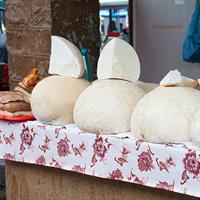
Shopping
Cluj-Napoca is a great city for shopping enthusiasts featuring two large malls; Iulius Mall and Polus Center along with various smaller shops, vintage outlet stores, and markets to explore. When shopping in Cluj some of the best local authentic items to buy are jams, nuts, honey, and dried fruits, cheese, and wine and jewelry, embroidery, woven rugs, ceramics, woodwork, and leather goods.
Check out independent designer stores Helofita with several locations in the city selling a great selection of secondhand clothes in good condition. Tabita is a chain of outlet stores selling cool local items. Adina Grapa is a local designer selling amazing handmade leather bags along with The Mill Handmade for Life selling affordable leather goods. Marelbo is Romania’s own leather brand selling men’s and women’s footwear, belts, bags, and accessories with reasonable prices and great quality.
Central Market is a great place to shop for everything local, along with the locals who come here for their fresh produce. The market offers visitors a unique Transylvanian experience with dozens of local vendors selling the freshest, locally grown produce daily to the residents. Enjoy a wide variety of local foods.
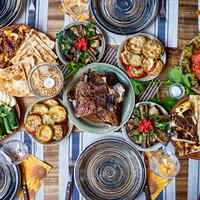
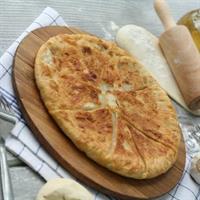

Food and Nightlife
The dining scene in Cluj-Napoca is varied and diverse with a plethora of restaurants specializing in Transylvanian, Romania, Hungarian, Italian, Chinese, Japanese, Mexican, Middle Eastern, American, and International cuisine leaving diners spoilt for choice. Dining in the city is some of the best in the country, the Cluj people are very proud of their city, culture, and cuisine with traditional dishes including varza a la Cluj, a savory plate with pork, sour cabbage, and rice flavored with paprika, thyme, and cumin normally served with bread and sour cream. Other local specialties include “ciorba” (soups), meats (sausages), and “mamaliga” which is known as polenta in the rest of the world served with cream, and “goulash” in many varieties.
The city offers diners options such as steak houses, sushi bars, international fast-food restaurants, traditional restaurants, and fine dining. There is a large coffee culture in Cluj and brunch has become increasingly popular with great locations to enjoy both all over the city. Meron is a roastery and coffee place with several locations, Eggceter was the first brunch location to open serving breakfast all day long, District o Toast is a chic place with breakfast, lunch, and dinner options along with great cocktails too featuring homemade ingredients, they make their ginger beer too and have a cool outdoor space. Ham and Jam is a US-style eatery serving up delicious sweet breakfast items.
The city of Cluj-Napoca is a youthful University town offering visitors a vibrant, happening nightlife scene filled with bustling bars, clubs, cafes, and pubs. The city offers plenty of places to grab a drink, go dancing, listen to music and absorb the summer evenings.
There is a great craft beer, and cocktail scene in Cluj and a concentration of fun establishments to enjoy in the compact city. Strada Piezisa (slanted street) is one of the most popular locations in the city, the central nightlife strip in the Hasdeu student area packed with bars and terraces. Here is a list of just a few of the fun places to check out while visiting Cluj; Charlie’s Pub for the whiskey lovers, The Londoner for those that want to check out a traditional pub scene, Booha Bar is a popular bar with the students, Joben Bistro and Enigma have a steampunk theme, Club Midi was recognized as one of the top 100 clubs in the world by DJ Mag several times, and FORM Space featuring live events and club nights.
Diesel Club is the oldest club in the city center set on the popular Unirii Square, other fancy clubs in the city of Cluj include Obsession The Club, Midi, these three are classified as the top three club venues in the Transylvania-Banat region. Fashion Bar is also found in Unirii square featuring an exclusive terrace sponsored by Fashion TV.

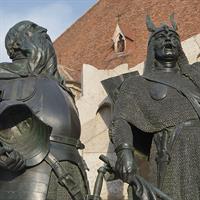
History and Culture
Cluj-Napoca was inhabited in BC times when it was an important center when the Roman Empire invaded the region until the year 274. During medieval times Kolozsvar, which is Hungarian for Cluj-Napoca was under Hungarian rule, the town developed quickly and was at the crossroads of two trading routes. Matthias Corvinus the greatest Hungarian king born in the city in 1443. Cluj-Napoca was included in the Principality of Transylvania and the main cultural and religious center of the region and became the capital of the region in 1791. Today it is the second-largest city in Romania and the main center of Hungarian culture in the country. The city became the main cultural and religious center of Transylvania during the 16th century and in the early 1800s, it was an important location for Hungarian theatre and opera. Cluj is home to the Romanian National Theatre and today still has a diverse, growing cultural scene including performing arts, visual arts, and nightlife.
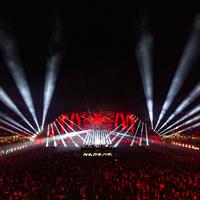

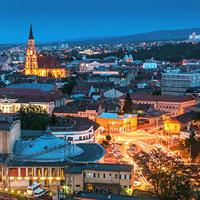
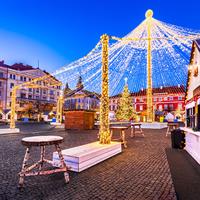
Music Festivals and Events
The city of Cluj-Napoca is the host of numerous cultural, and musical festivals and events of various types occurring throughout the year. The city hosted important musical events such as the MTV Romania Music Award ceremony in 2006 at the Sala Sporturilor Horia Demian featuring Sugababes, Pachanga, and Uniting Nations as special international guests. International artists such as Beyonce, Iron Maiden, Deep Purple, and Roxette have performed in Cluj-Napoca. Here is a list of some of the exciting festivals held in the city;
"Sarbatoarea Muzicii" - June 21st - A music festival
Beer Crafters - June - Beer crafters bring the best ales from Cluj for a fun weekend festival.
Jazz in the Park - June - The annual small Jazz festival is held in Central Park.
Splaiul Independentei - Summer - On the banks of Somesul Mic there are a number of festivals held throughout the summer including beer festivals and “Septemberfest”.
The Transylvania International Film Festival (TIFF) - May/June - Annual film festival held in the city since 2001. The most important and best-known film festival in the country attracts over 100,000 attendees from all over the world. Held in over 20 venues around the city.
Toamna Muzicala Clujeana - Annual event - The Transylvania State Philharmonic Orchestra hosts the most important classical music event after the George Enescu Festival.
Delahoya - The oldest electronic music festival in Romania since 1997.
Electric Castle Festival - July - Banffy Castle - A massive annual music festival one of the biggest and best in Europe with over 120,000 attendees. The festival combines electronics, rock, hip hop, indie, and more.
Untold Festival - August - The largest annual electronic music festival in Romania is held in Cluj Arena and Polyvalent Hall.
Form Days - July - A music and arts extravaganza held in Gilau.
Clujotronic - October - Electronic Music Festival held annually for a weekend full of music, art, and fun.
Cluj Christmas Fair - December - Traditional Christmas market stalls and Christmas fairs, one of the best in all of Romania with twinkling lights, lots of food, booze, and Christmas shopping.